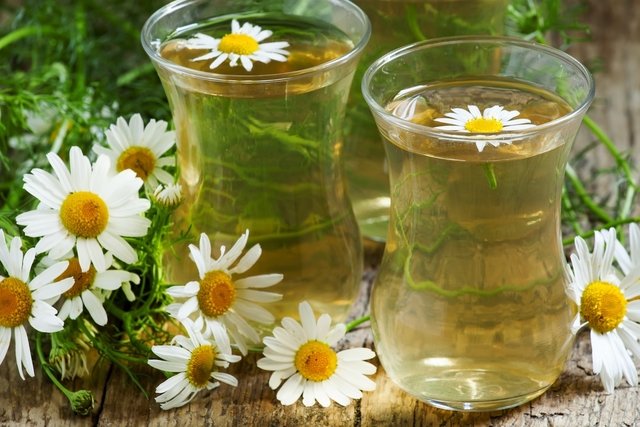Home remedies for pink eye, such as applying cold compresses, using calendula solution and applying hydrastis tea, are great natural options for relieving the symptoms of conjunctivitis, like redness, itching, swelling or irritation of the eye. These contain substances with anti-inflammatory, antiseptic and soothing properties.
To complement these home remedies, you should also avoid scratching your eyes or putting your hands to your face. Be sure to use disposable tissues or compresses to clean your eyes, and to wash your hands frequently particularly before and after touching your face.
Although these remedies should not replace medical treatment, home remedies are a great option to help relieve the symptoms of pink, and can be used as a complement. These are best used for older children and adults - check out how pink eye is treated in babies.

1. Calendula solution
Calendula solution, prepared with the medicinal plant Calendula officinalis, has anti-inflammatory properties that help relieve itchy eyes and the discomfort caused by allergic conjunctivitis or follicular conjunctivitis.
Ingredients
- 2 tablespoons of dried calendula
- 250 ml of boiling water
Directions
Add the calendula to the boiling water, cover and leave to soak for about 15 minutes. Then strain, wait for the solution to cool and dip a clean gauze pad into it. Squeeze the gauze gently to remove the excess calendula solution and apply it to the closed eye, i.e. the eyelid, for 15 minutes. After this time, remove the gauze and discard it. You can use the calendula solution up to 6 times a day.
If both eyes are affected by conjunctivitis, one gauze pad with the calendula solution should be used for each eye separately and discarded after use.
2. Hydrastis tea
Hydrastis tea, made from the medicinal plant Hydrastis canadensis L., has anti-inflammatory and antiseptic properties, which help to soothe eye irritation and combat the inflammation caused by conjunctivitis.
Ingredients
- 1 teaspoon of powdered hydrastis root
- 250 ml of boiling water
Directions
Add the powdered hydrastis to the boiling water, stir, cover and leave to infuse for about 15 minutes. Strain the tea through a coffee filter to remove all the particles from the hydrastis powder. Then wait for the hydrastis tea to become lukewarm and wet a clean gauze pad with the tea. Squeeze the gauze gently to remove the excess tea and apply it to the closed eye for 5 to 10 minutes. After this time, remove the gauze and discard it. Hydrastis tea should be used up to 3 times a day.
3. Chamomile infusion
Chamomile infusions can also be used in the form of compresses applied to the eyelid to treat conjunctivitis, due to its anti-inflammatory and soothing properties. It can help relieve irritation and inflammation in the eye.
Ingredients
- 20 to 30 grams of fresh or dried chamomile flowers
- 500 ml of boiling water
Directions
Add the fresh or dried chamomile flowers to the boiling water and leave to stand for 15 minutes. Strain and leave to cool or place the chamomile infusion in the fridge for 10 to 20 minutes. Wet a gauze pad and apply to the closed eye for 15 to 30 minutes, at least twice a day.
Another option is to use a chamomile tea bag to prepare the infusion and apply the bag to the affected eye after it has cooled in the fridge.
Read more about the health benefits of chamomile tea and what it can be used for.
4. Cold compress
A cold compress is a great way to reduce eyelid swelling, pain and discomfort caused by any type of conjunctivitis.
Ingredients
- Gauze or absorbent cotton;
- 250 ml of cold water.
Directions
Soak a piece of absorbent cotton or clean gauze in cold water and apply to the eyelid of the closed eye, leaving it on for a few minutes until the symptoms improve. When it is no longer cold, change and apply another cold compress.
